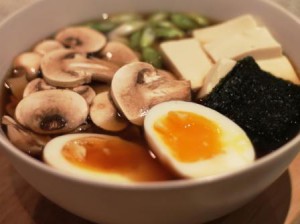In Tokyo, the Japanese have a slightly different approach to sushi.
Most Japanese prefer to eat nigiri rather than sushi rolls.
If you are dining at a sushi restaurant in Tokyo the rolls will often contain something different from what we know about in Europe. In Japan, it is very normal to serve a hosomaki (small roll) to end a sushi meal.
It may contain pickled plum or tuna.
When it comes to sushi there is nothing right or wrong. Most restaurants have their own style. When it comes to raw materials Japanese sushi chefs in Tokyo and I are in favor of using local produce that is in season.
Read more about the Sushi course for beginners
_
Zoë has held sushi courses and cooking classes for A. P. Moller – Maersk, Hugo Boss Nordic, Novo Nordisk, Novartis, Velux, Gorrissen Federspiel, Beierholm revision, Elbek & Vejrup and many more.









